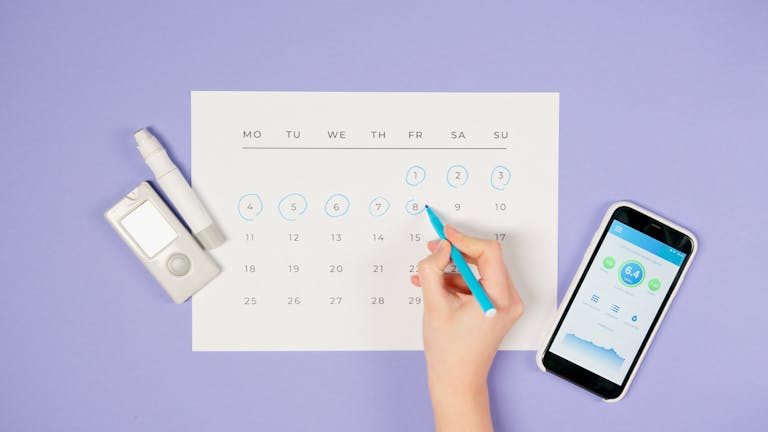Common Time Wasters at Work and How to Avoid Them
Ever feel like the workday flies by, but nothing gets done? You’re not alone. Most people show up, sit down, and somehow still end up scrambling at the end of the day. The clock moves fast — and so do distractions.
According to a study, the average employee loses over 2 hours every day to time-wasting habits — checking email too often, chatting too long, or sitting in pointless meetings.1 That’s 10 hours a week gone.
These time wasters don’t just slow you down; they also waste your time. They also chip away at motivation and job satisfaction. The result? Stress piles up. Deadlines slip. Work feels heavier than it should.
That’s why spotting the small things that waste your time is a big deal—and fixing them is even more important.
This post breaks down the most common time wasters at work — with simple fixes, and tips to help you stay on track. If you’re wondering how to avoid time wasters and feel better about your workday, keep reading. The answers are straightforward. And they work.
What Are Time Wasters at Work?
Some things feel harmless at first. A quick chat. A few emails. Checking notifications for just a minute. But these little habits steal more time than we think.
Time wasters at work are the everyday actions that look busy but don’t move real work forward. Scrolling through social media, bouncing between tasks, sitting in meetings with no clear goal—each one adds up. And before you know it, half the day is gone.
The tricky part? Most of these distractions don’t feel like a big deal. They’re easy to overlook because they seem normal, like something that comes with the job.
But the cost is real. Missed deadlines. Late projects. Work that stretches longer than it should. And after a while, it wears people down. Stress builds. Motivation drops. Burnout creeps in without warning.
And it’s not just about you. One person running behind can slow down the whole team. Lost time affects communication, collaboration, and momentum. Employee productivity suffers—without anyone fully realizing why.
These common time wasters at work aren’t always loud or obvious. But once you spot them, they’re easier to fix. And cutting them out can give your day a significant boost.
Top 9+ Time Wasters at Work (with Real Solutions)
We often blame big distractions for lost time—but in reality, it’s the small, unnoticed habits that quietly drain hours from our workdays. From endless emails to multitasking, workplace inefficiencies creep in without warning. Here are the top time wasters at work—and how to fix them.
1. Inefficient Meetings
Meetings are meant to create clarity—but too often, they do the opposite. In fact, 67% of employees say excessive meetings distract them from their actual work (Atlassian, 2022).
Lack of agendas, too many attendees, and no clear outcomes are the major culprits for making meetings ineffective.
Solutions:
- Create agendas: Always outline key discussion points beforehand.
- Only key people: Invite only essential participants to avoid confusion.
- Action steps: End each meeting with defined tasks and deadlines.
2. Email Overload
Email is essential—but also a major productivity trap. The average worker spends 28% of their workweek reading and responding to emails, with personal email alone consuming 25% of work time (McKinsey Global Institute).
Solutions:
- Email batching: Check emails at set times to reduce context switching.
- Smart filters: Use folders and rules to sort incoming messages.
- Turn off alerts: Disable desktop/mobile notifications for better focus.
3. Social Media Distractions
Personal social media use is one of the fastest-growing sources of workplace inefficiency. A study by Croplink revealed that employees check social media up to 15 times per day, often unintentionally consuming more than 2 hours weekly.
Excessive social media use can kill momentum and shorten attention spans.
Solutions:
- Use Blockers: Use tools like Freedom or StayFocusd during deep work hours.
- Set limits: Allocate specific break times for personal browsing.
- Track usage: Use screen-time reports to self-audit.
4. Chatty Coworkers & Interruptions
While some interaction is healthy, unplanned conversations and open office chatter can shatter focus.
Noise, unplanned conversations, and open office dynamics can disrupt workflow. In addition, A UC Irvine study found that it takes an average of 23 minutes to refocus after a single interruption.
Solutions:
- Focus zones: Designate quiet areas or “do not disturb” hours.
- Polite boundaries: Use visual cues, such as headphones, to signal when you’re in deep work mode.
- Noise tools: Use white noise apps or noise-canceling headphones.
5. Lack of Self-Discipline & Motivation
When energy dips and goals feel unclear, procrastination creeps in. Research from Vouchercloud found that the average office worker is productive for only 2 hours and 23 minutes a day—with the rest of the day lost to procrastination and distractions. Additionally, burnout leads to higher rates of missed deadlines.
Solutions:
- Break it down: Divide large tasks into smaller, manageable parts.
- Mini-deadlines: Create time-bound checkpoints.
- Reward system: Treat yourself for completing focused work sessions.
6. Multitasking
Multitasking may feel productive, but it often causes more harm than good. A study by the American Psychological Association found that switching between tasks can reduce productivity by up to 40%. It also increases mental fatigue and reduces the quality of work.
Solutions:
- Single-task: Focus on one task at a time using Pomodoro or time blocks.
- Prioritize: Use the Eisenhower Matrix or ABCD method to focus on high-value tasks first.
- Batch tasks: Group similar tasks for smoother transitions.
7. Poor Planning
Starting the day without a plan leads to confusion, wasted time, and a constant state of reactivity. Unclear priorities can make simple tasks take hours. On the other hand, when you have a solid plan, you will be clear about tasks and finish more in less time.
Solutions:
- SMART goals: Set specific, measurable, attainable goals.
- To-do lists: Use checklists to track tasks.
- Task timers: Allocate time limits using apps like Toggl or Clockify.
8. Outdated Technology & Disorganized Processes
Slow computers, clunky software, and messy desks eat into productive hours. A significant amount of time is wasted searching for documents in disorganized systems. Plus, outdated tech causes unnecessary frustration and delays.
Solutions:
- Update tools: Utilize reliable and fast systems, as well as cloud storage solutions.
- Organize files: Keep folders labeled and regularly cleaned.
- Declutter weekly: Clear physical and digital clutter every Friday to maintain a tidy workspace.
9. Ineffective Delegation
Micromanagement, unclear task assignments, or poor follow-through result in duplicated effort or missed deadlines. In addition, doing everything yourself creates bottlenecks.
Solutions:
- Assign by skill: Match tasks to team members’ strengths and abilities.
- Clear expectations: Define deadlines, deliverables, and check-in points.
- Trust your team: Give space for independent decision-making.
Strategies to Minimize Time Wasters
Many time-wasting habits at work are small and subtle—so subtle that we often don’t notice them until hours have slipped by. But a few intentional strategies can eliminate these distractions. Here are practical, proven methods to help you overcome workplace inefficiencies and achieve more.
1. Use Smart Time Management Techniques
Knowing how to manage your time is the first step to eliminating waste. Popular time management techniques, such as the Pomodoro Technique, Time Blocking, and the Eisenhower Matrix, are helpful in using time effectively.
These methods reduce overwhelm, encourage deep work, and make tasks feel more achievable.
- Pomodoro Technique: Work for 25 minutes, then take a 5-minute break. Improves focus and reduces burnout.
- Eisenhower Matrix: Prioritize tasks by urgency and importance, so you don’t waste energy on the wrong things.
2. Set Clear and Actionable Goals
Without direction, tasks can spiral. Setting SMART goals (Specific, Measurable, Achievable, Relevant, Time-bound) creates clarity and urgency.
Clear goals align your daily tasks with your long-term vision.
- Weekly planning: Helps avoid decision fatigue and scattered efforts.
- Daily targets: Keep your to-do list intentional and realistic.
3. Build a Productive Work Environment
Your physical space affects your mental clarity. A cluttered desk or noisy setting can be a hidden time sink. On the other hand, an organized space promotes calm, clarity, and faster decision-making.
- Declutter weekly: File or toss old papers, clear unused apps and tabs.
- Noise control: Use noise-canceling headphones or background music to reduce distractions.
4. Leverage the Right Tools and Technology
Tools can either save time or suck it—choose the right ones.
Apps for task management, automation, and reminders can handle repetitive tasks and free up your mental energy.
- Use productivity tools: Apps like Trello, Todoist, or Notion help manage tasks visually.
- Automate repetitive tasks: Use templates, autoresponders, and calendar reminders.
5. Develop Strong Self-Discipline
Willpower alone isn’t enough. Build habits that minimize temptations and create accountability. Try mini-rewards, accountability partners, or the “2-minute rule” (if it takes under 2 minutes, do it now).
- Set working hours—even if you work from home.
- Use techniques: Temptation bundling or habit stacking to stick to important tasks.
6. Practice Mindfulness and Sharpen Focus
Multitasking drains energy and lowers quality. Mindfulness practices help regain control of your thoughts. Mindfulness helps your brain stay focused longer and recover more quickly from distractions.
- Try 5-minute meditation breaks: They reset mental fatigue.
- Single-tasking: Train your brain to give full attention to one thing at a time.
7. Embrace Continuous Improvement
What works for someone else might not work for you. Productivity is personal. And reviewing your habits helps you adapt and improve your workflow over time.
- Weekly reviews: Reflect on what wasted time and what worked.
- Track time: Tools like Toggl help identify your biggest drains.
8. Prioritize Deep Work
Shallow tasks keep you busy; deep work moves you forward. Protect 1–2 hours a day for focused, uninterrupted work on high-value tasks. You’ll make massive progress on fewer, more meaningful goals.
- Say no more often: Turn down meetings and requests that don’t align with your priorities.
- Create work-life boundaries: Don’t respond to messages outside of work hours unless urgent.
9. Take Breaks Intentionally
Breaks aren’t a waste—they’re a reset. When done right, they help maintain long-term efficiency. Micro-breaks reduce mental fatigue and improve creative thinking.
- Use the 52/17 rule: Work for 52 minutes, then rest for 17
- Go outside or stretch: A physical reset boosts mental clarity.
Conclusion
Time wasters might seem harmless at first—but over time, they quietly chip away at your focus, productivity, and even how satisfied you feel at the end of the day.
However, you don’t need a major overhaul to fix this. By becoming more aware of your habits, you can maximize your time.
Want more simple changes that make a big difference? Check out 43 Eye-opening Tips on How to Save Time in Daily Life.
Need to speed things up? Read How to Work Faster: Tips for Boosting Productivity.




